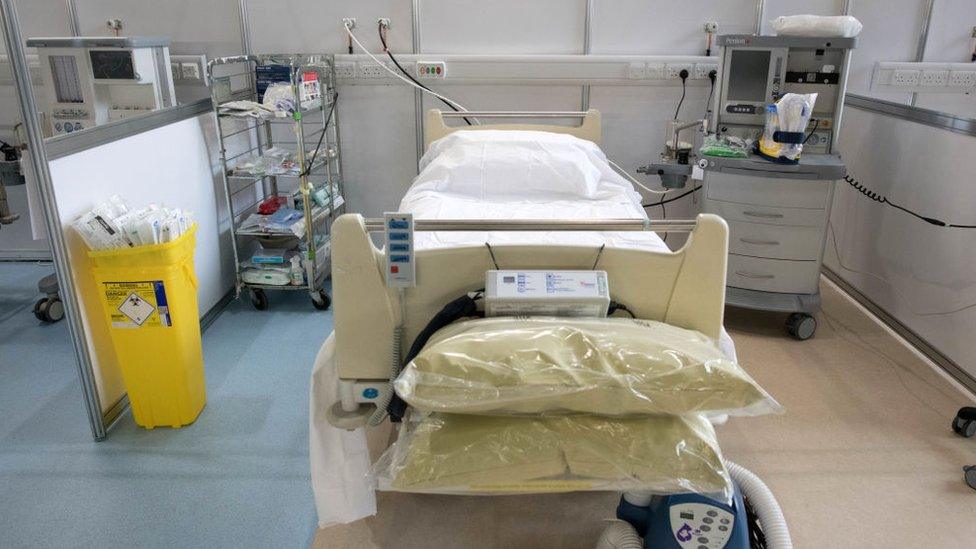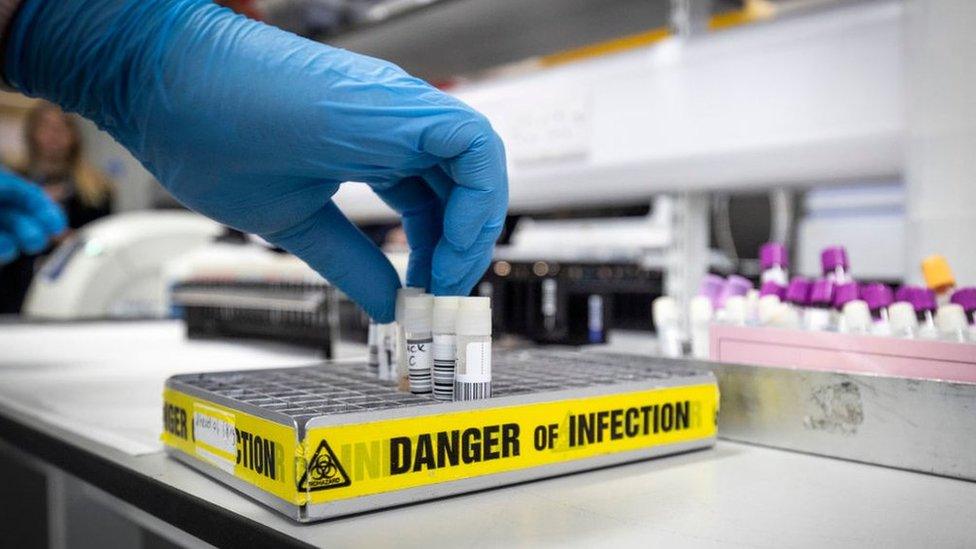Coronavirus: New figures suggest higher death toll
- Published

New figures have suggested that more people than originally recorded may have died after contracting coronavirus in Scotland.
Data from the National Records of Scotland said that 354 deaths had been linked to the virus by 5 April.
The figure previously announced for that same period had been 220 deaths, although this was seen as an under-estimate due to delays in reporting.
The NRS report, external provides a wider, more detailed picture of the virus' impact.
For the first time, it includes deaths outside of hospital and those where Covid-19 is a "suspected" cause.
It showed that the vast majority of deaths in Scotland so far have been among those aged over 65, with those aged over 75 accounting for 60% of the total.

The NRS figures give the number of deaths "involving" coronavirus because they include all cases where Covid-19 is mentioned on death certificates. These can list multiple causes of death, including "suspected" or "probable" causes.
The report also breaks down deaths by gender, age range, and the local health board involved.
Of the 354 deaths, 197 were male and 157 were female.
Four people who died were aged between 15 and 44, and 44 were aged 45-64. The rest of the deaths - accounting for more than 85% of the total - were among those aged over 65.
Interim chief medical officer Dr Gregor Smith said the data helps the government understand better how the virus is spreading across Scotland and how to respond to it.
First Minister Nicola Sturgeon said she was "acutely aware" that "deaths are more than statistics", and expressed her condolences to bereaved families.
The Scottish government also published the latest daily figures on confirmed deaths, which had risen by 70 to 366 on Wednesday.

The new NRS data also shows that some areas have been harder hit than others.
In the Borders health board area, 3.8% of deaths since the outbreak began have been linked to the virus. In Greater Glasgow and Clyde, the figure is 3.2%.
However, coronavirus was linked to 1.2% of deaths in Tayside, and to 0.7% of deaths in Grampian. Neither the Western Isles nor Orkney had recorded any deaths linked to the virus by 5 April.
The figures also revealed a spike in the overall number of deaths in Scotland at the beginning of April.
Over the past five years, an average of 1,098 people died in the first week of April. This year the figure had risen to 1,741, although the report only linked 282 of those deaths to Covid-19.
Ms Sturgeon said there was not yet enough information to explain this, although she said it may partly be down to the fact registration offices had been closed the previous week.
And both the first minister and chief medical officer urged people to still seek medical help if they have urgent health problems, with Dr Smith saying: "I want to make it clear that your NHS remains open to you."

What does the new data tell us?
Up until now, the Scottish government has published data from Health Protection Scotland (HPS) each day, covering cases of coronavirus which were confirmed by laboratory testing.
The figures which have been released so far reflect how many people have died within 28 days of testing positive for the virus.
The new stats are sourced from the National Records of Scotland, and capture a bigger picture. They include all cases where Covid-19 is mentioned on a death certificate, even if the patient was not in hospital and had not been tested - and even if the virus was one of a number of factors.
So these figures - which will be published weekly, on Wednesdays, alongside the regular daily updates - will include all cases where the virus was a confirmed, suspected or probable cause of death, either as an underlying cause or directly contributing to it.
As well as being bigger, the picture drawn by these stats is also more detailed, including breakdowns of the age, gender and health board location of those dying.
- Published2 April 2020
